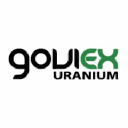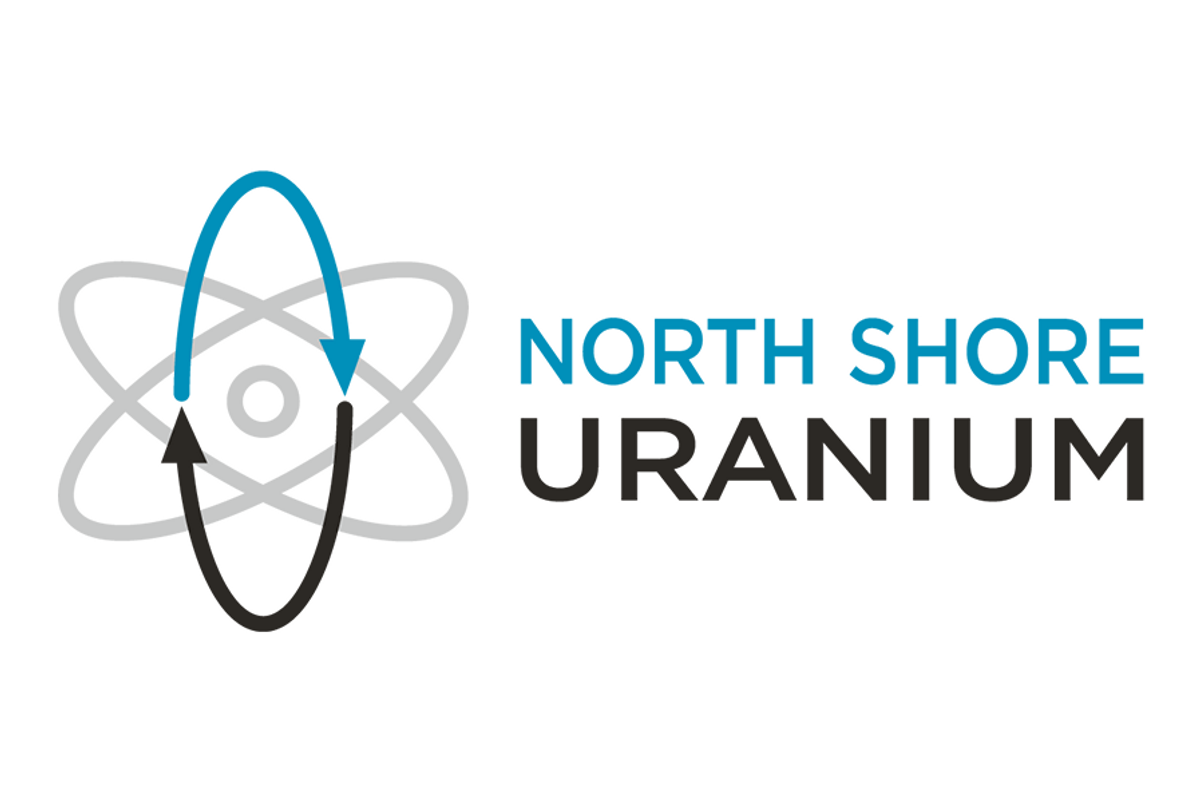GoviEx Uranium Inc. (TSXV: GXU) (OTCQB: GVXXF) ("GoviEx" or "Company") today provides a Letter to Stakeholders and Market Update from the Executive Chairman, Govind Friedland and the Chief Executive Officer, Daniel Major.
To Our Fellow Stakeholders,
When we reflect on 2020, it will likely be remembered as the year strongly dominated by the COVID pandemic. Yet despite 2020 being a year like no other, GoviEx was able to adapt to this challenging environment and made progress by improving our financial position, advancing our pipeline of uranium mine development plans, specifically in Niger, and beginning the assessment of our compelling gold prospects in Mali. The positive momentum of our activities in 2020 has continued into 2021.
Commodities Backdrop
The spot uranium price has been in a gentle uptrend for past four years after having reached its cyclical low of USD ("$") 18 per pound ("lb") U3O8 in December 2016. During 2020, the spot uranium price rose from 25 $/lb at the start of the year, to 30 $/lb at the end, a 20% increase. This increase is being supported by progressively stronger demand for nuclear energy, with annual generation now above pre-Fukushima levels, and new demand growth rates, which are forecast to be between 2% and 3% supported by new reactor builds predominately in Asia.(1)
Nuclear energy has shown its resilience during 2020, while energy consumption is forecast to drop by 12% in the US, by 8% in Europe (2) the reduction has been focused on reduction in carbon related fuels. We have seen increased levels of competitively priced renewable energy coming online from wind and solar and as the energy transition narrative continues, and more dirty carbon baseload is taken off-line, there will be increased dislocations and destabilizations to national grids that will need to be supported by a reliable baseload alternative to burning dirty carbon - a role that is perfectly suited to emission free and reliable nuclear energy. At the same time we anticipate accelerated global competition for the development of small modular reactors (often referred to as "SMRs") with their potential benefits of speed, scale, safety, simplified logistics and improved economics opening the door for nuclear energy in new markets and new applications.
Even though demand for nuclear energy and uranium fuel has been steadily growing and the supply of uranium has been declining, producers have had to contend with an over-supplied market, attributable to past years of over-production. Inventories and secondary supplies have allowed for years of low prices - to the point where even the largest and lowest costs sources of primary production struggle to produce uranium economically. This is evident by the fact that, since 2016 the major uranium producers, NAC Kazatomprom JSC and Cameco Corp., have taken significant action to responsibility constrain their respective new production supply, which has resulted in a primary supply deficit (uranium demand exceeding new uranium production) and a corresponding reduction in global inventories - the effects of which were compounded by COVID-related production disruptions for both companies during 2020 and into 2021 - with the potential to drive continued producer purchasing from the spot market to meet their contractual commitments. The resolve of our industry leaders appears strong - with public statements of their commitment to maintain production restraint until uranium prices increase to more sustainable levels to justify long-term production decisions. Analysts and industry agree that higher uranium prices are required to incentivise both restarts and necessary new production in the 2020s. This is good reason to be bullish on the future of uranium mining.
Corporate Development
Throughout 2020, GoviEx continued to focus on advancing its mineral projects while focusing on fiscal discipline to maintain balance sheet strength.
GoviEx completed two private placements in 2020 that raised an aggregate CAD 7.3 million, and in January 2021 completed a private placement that raised CAD 8.0 million. These financings provide GoviEx with a healthy balance sheet designed to support the Company in funding the potential accelerated development of its mine-permitted projects as the anticipated uranium market recovery continues through 2021. The Company's financial position was further supplemented by the exercise of outstanding warrant and stock option in the first quarter of 2021, and loan recovery collections in 2020 from the loan made to Linkwood Holdings Pte Limited ("Linkwood") in 2018. In compliance with IFRS, the Linkwood loan was written-off in 2019; however, Linkwood continues to make payments on the loan as and when it can and has pledged marketable securities as collateral, which could potentially become the source of future payments once those securities become freely tradeable.
As we look forward to a strengthened uranium market and the potential development of our uranium projects, the Company was pleased to announce on February 22, 2021, the appointments of Ms. Salma Seetaroo and Mr. Eric Krafft to the Company's board of directors. Salma and Eric complement the existing GoviEx team, bringing forward unique skillsets and considerable experience in commodities, investment banking and, most importantly, ESG.
In addition, GoviEx was pleased to announce the inclusion of the Company in the Solactive Global Uranium & Nuclear Components Total Return Index, effective February 1, 2021, which is the index used by the Global X Uranium ETF (NYSE: URA), as well as the inclusion of the Company in the Solactive Global Uranium Pure-Play Index, which is used by the Horizons Global Uranium Index ETF (TSX: HURA). These important index inclusions have the potential to bring important increased liquidity to the Company's trading on the TSX Venture Exchange as well as new direct and indirect shareholders.
Mineral Property Development
Niger
Over the past year, our technical team together with our feasibility study consultants, SRK Consulting (UK) Ltd. and SGS Bateman (Pty) Ltd., have been focused on metallurgical testing and engineering design work that have potential to significantly benefit the overall feasibility of the Company's' mine permitted Madaouela Uranium Project in Niger (the "Project"). We worked diligently to target areas that may reduce both operating and capital costs relative to the previous pre-feasibility study issued in 2015 (the "2015 PFS") (3) on the Project, while at the same time working on reducing technical risk, with a focus on improving overall project economics. The results of the updated pre-feasibility study ("Updated PFS") were publicly released by the Company on February 18, 2021. The Updated PFS succeeded in delivering a technically robust and significantly simplified Project, reducing development and operational risk. The mining operations at the Project are planned to commence by open pit at the Miriam deposit at a much lower uranium price, hence improving the Project's bankability in its early years and significantly improving its potential for attractive debt financing. The Updated PFS on the Project now accounts for five years of inflation and currently quoted costings since the 2015 PFS.(3)
Mali
At our Falea Project in Mali, which consists of three Exploration Permits; Falea, Bala and Madini, gold soil sampling on the Madini Permit, and sampling of historic diamond drill cores and geophysics program on the Falea and Bala Permits has expanded the potential not only for uranium but also for gold, copper and silver (see Company news release of December 12, 2020). The exploration work completed in 2020 shows that two major regional gold trends intersect with the Falea Project permits, that there is a strong correlation between gold mineralisation the structural faults and IP anomalies, and that IP anomalies remain relatively untested. In February 2021, International Drilling Company from Senegal, started a 6,000 metre air core drilling program on the Madini Permit to test the previously noted soil anomalies. The results of this drilling program are due in late April 2021. Additional low-cost exploration is planned to improve our understanding of these Permits and in order to better guide how best to daylight their associated value.
Zambia
Further to its news release of July 7, 2020, announcing that the Mining Cadastre Department of Zambia had notified the Company that it had terminated the Chirundu Mining License (12634-HQ-LML) (the "Chirundu Licence") due to a breach of Section 35 of the Mines and Mineral Development Act, 2015, the Company has focused on recovery of the Chirundu Licence. Section 35 stipulates, among other things, that a mining licence holder is required to develop the permitted mining areas, carry out mining operations and comply with proposed capital investments of such licence. Since the date the Chirundu Licence was granted to the previous owner, the uranium price declined to such an extent that the license's commercial development was not feasible.
The Company filed a notice of appeal on July 24, 2020, and subsequently the Company has received notice from the Minister of Mines that he is willing to accept the Company's appeal, subject to additional information review, which the Company has since provided and is currently awaiting a response from the Minister.
Since acquiring the Chirundu Licence in July 2017, GoviEx has ensured all statutory reports and payments have been made, and in addition has expanded its Community and Social Responsibility programs to cover the villages within the Chirundu License area, including the reconstruction of a school and the commencement of an adult education program.
These accomplishments could not have been possible without the tireless effort of our team in Africa and our head office team in Vancouver. Our success has truly been the result of a team effort and we are grateful to all our stakeholders for their loyalty and hard work during difficult times. We are equally grateful to our investors for their financial support and confidence in our vision. We remain increasingly optimistic as we move further into 2021 with a strong balance sheet, rising commodity prices and the opportunity to further develop our diverse projects.
Yours sincerely,
Govind Friedland & Daniel Major
Qualified Person
The scientific and technical information in this release has been reviewed and approved by Dr. Rob Bowell, a chartered chemist of the Royal Society of Chemistry, a chartered geologist of the Geological Society of London, and a Fellow of the Institute of Mining, Metallurgy and Materials, who is an independent Qualified Person under the terms of NI 43-101 for uranium deposits. Mr. Bowell has verified the data disclosed in this news release.
Notes:
(1) See: https://world-nuclear.org/getmedia/b488c502-baf9-4142-8d12-42bab97593c3/nuclear-fuel-report-2019-expanded-summary-final.pdf.aspx
(2) See: https://www.enerdata.net/publications/executive-briefing/covid-19-impact-global-energy-system.html
(3) See: An independent NI 43-101 technical report was prepared for the Madaouela Project in 2015 to a prefeasibility level of confidence. The report titled "An Updated Integrated Development Plan for the Madaouela Project, Niger" has an effective date of August 11, 2015, and a revision date of August 20, 2015, and is available at GoviEx's profile on SEDAR at www.sedar.com.
Neither the TSX Venture Exchange nor the Investment Industry Regulatory Organization of Canada accepts responsibility for the adequacy or accuracy of this release.
About GoviEx Uranium
GoviEx is a mineral resource company focused on the exploration and development of uranium properties in Africa. GoviEx's principal objective is to become a significant uranium producer through the continued exploration and development of its flagship mine-permitted Madaouela Project in Niger, its mine-permitted Mutanga Project in Zambia, and its multi-element Falea Project in Mali.
Contact Information
Govind Friedland, Executive Chairman
Daniel Major, Chief Executive Officer
Tel: +1-604-681-5529
Email: info@goviex.com
Web: www.goviex.com
Cautionary Statement Regarding Forward-Looking Statements
This news release may contain forward-looking information within the meaning of applicable securities laws. All information and statements other than statements of current or historical facts contained in this news release are forward-looking information.
Forward-looking statements are subject to various risks and uncertainties concerning the specific factors disclosed here and elsewhere in GoviEx's periodic filings with Canadian securities regulators. When used in this news release, words such as "will", "could", "plan", "estimate", "expect", "intend", "may", "potential", "should," and similar expressions, are forward- looking statements. Information provided in this document is necessarily summarized and may not contain all available material information.
Forward-looking statements include those in relation to, (i) forecasts of new demand growth rates for nuclear energy and new reactor builds; (ii) dislocations and destabilizations to national grids due to carbon baseloads going off-line; (iii) the method and timing of any exploration, development or mining operations at any of the Company's projects; (iv) the rate of development and deployment of SMRs; (v) the contemplated use of proceeds from the two private placements in 2020 and the one Jan 2021; (vi) the potential of the Linkwood loan collateral becoming the source of future payments; (vii) the inclusion of the Company in any index brining increased liquidity as well as new shareholders to the Company; (viii) the bankability and/or potential for attractive debt financing of the Project; and (ix) the timing of drilling results from the Falea Project.
Although the Company believes the expectations reflected in such forward-looking statements are based on reasonable assumptions, it can give no assurances that its expectations will be achieved. Such assumptions, which may prove incorrect, include the following: (i) that the Updated PFS will advance the Project towards Project financing and development; (ii) that the current uranium upcycle will continue and expand; (iii) that the integration of nuclear power into power grids world-wide will continue as a clean energy alternative and increase as dirty carbon baseload is taken off-line; and (iv) that the price of uranium will remain sufficiently high and the costs of advancing the Company's mining projects will remain sufficiently low so as to permit GoviEx to implement its business plans in a profitable manner.
Factors that could cause actual results to differ materially from expectations include (i) that the market will not respond as anticipated to the Updated PFS; (ii) a regression in the uranium market price; (iii) inability or unwillingness of include or increase nuclear power generation by major markets; (iv) potential delays due to COVID-19 restrictions; (v) the failure of the Company's projects, for technical, logistical, labour-relations, or other reasons; (vi) a decrease in the price of uranium below what is necessary to sustain the Company's operations; (vii) an increase in the Company's operating costs above what is necessary to sustain its operations; (viii) accidents, labour disputes, or the materialization of similar risks; (ix) a deterioration in capital market conditions that prevents the Company from raising the funds it requires on a timely basis; and (x) generally, the Company's inability to develop and implement a successful business plan for any reason.
In addition, the factors described or referred to in the section entitled "Financial Risks and Management Objectives" in the MD&A for the year ended December 31, 2019, of GoviEx, which is available on the SEDAR website at www.sedar.com, should be reviewed in conjunction with the information found in this news release.
Although GoviEx has attempted to identify important factors that could cause actual results, performance, or achievements to differ materially from those contained in the forward- looking statements, there can be other factors that cause results, performance, or achievements not to be as anticipated, estimated, or intended. There can be no assurance that such information will prove to be accurate or that management's expectations or estimates of future developments, circumstances, or results will materialize. As a result of these risks and uncertainties, no assurance can be given that any events anticipated by the forward-looking information in this news release will transpire or occur, or, if any of them do so, what benefits that GoviEx will derive therefrom. Accordingly, readers should not place undue reliance on forward-looking statements. The forward-looking statements in this news release are made as of the date of this news release, and GoviEx disclaims any intention or obligation to update or revise such information, except as required by applicable law.

To view the source version of this press release, please visit https://www.newsfilecorp.com/release/76734











